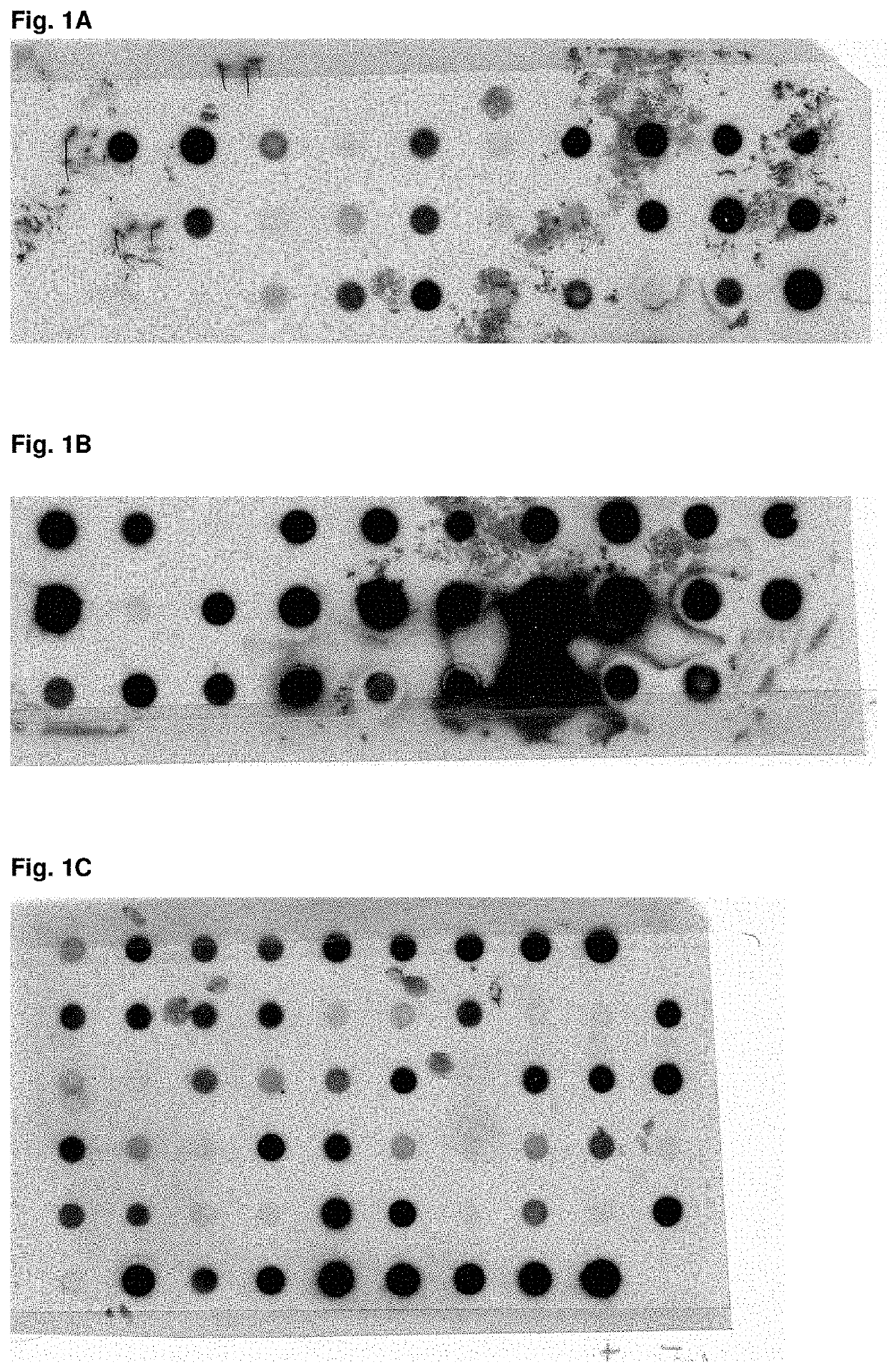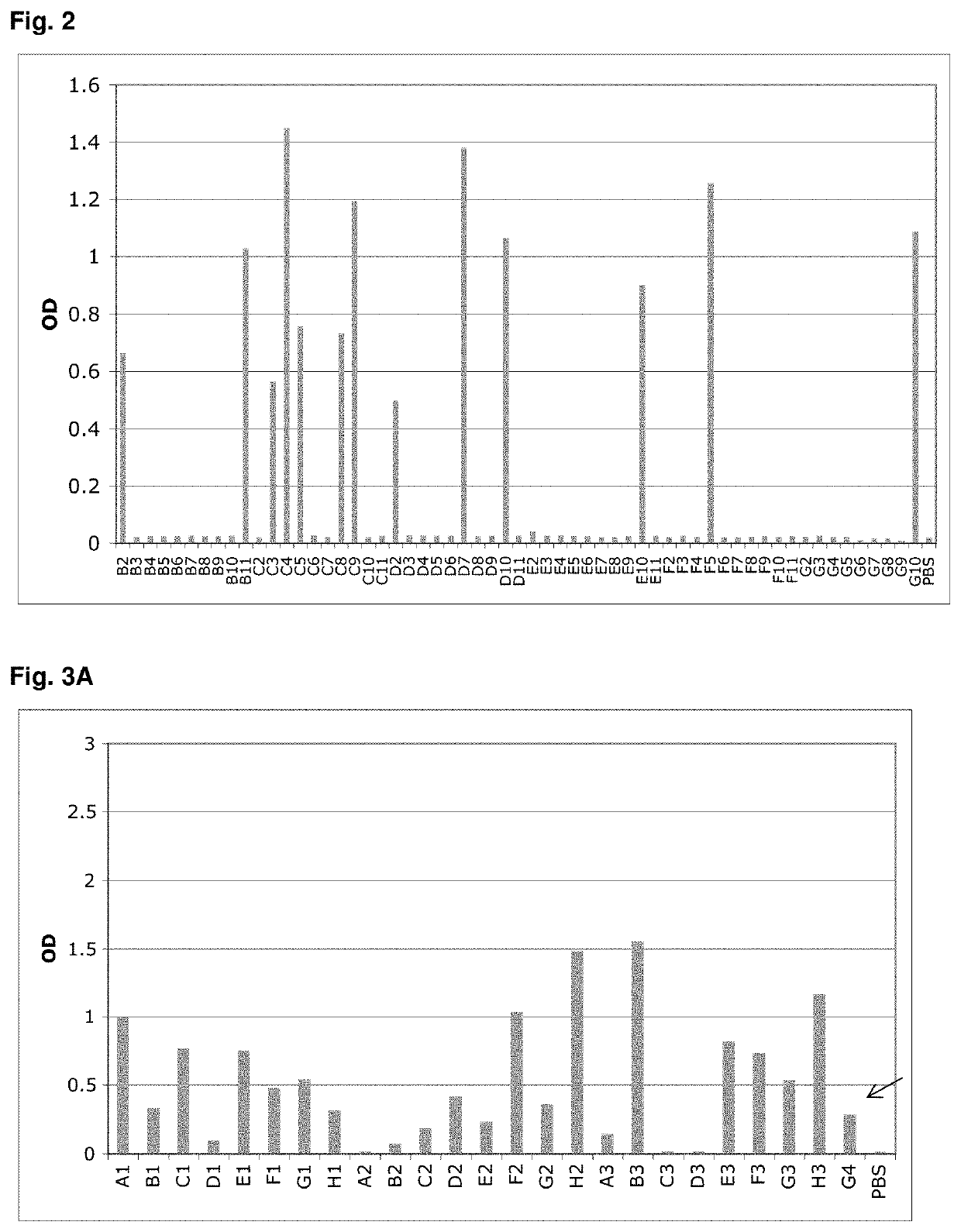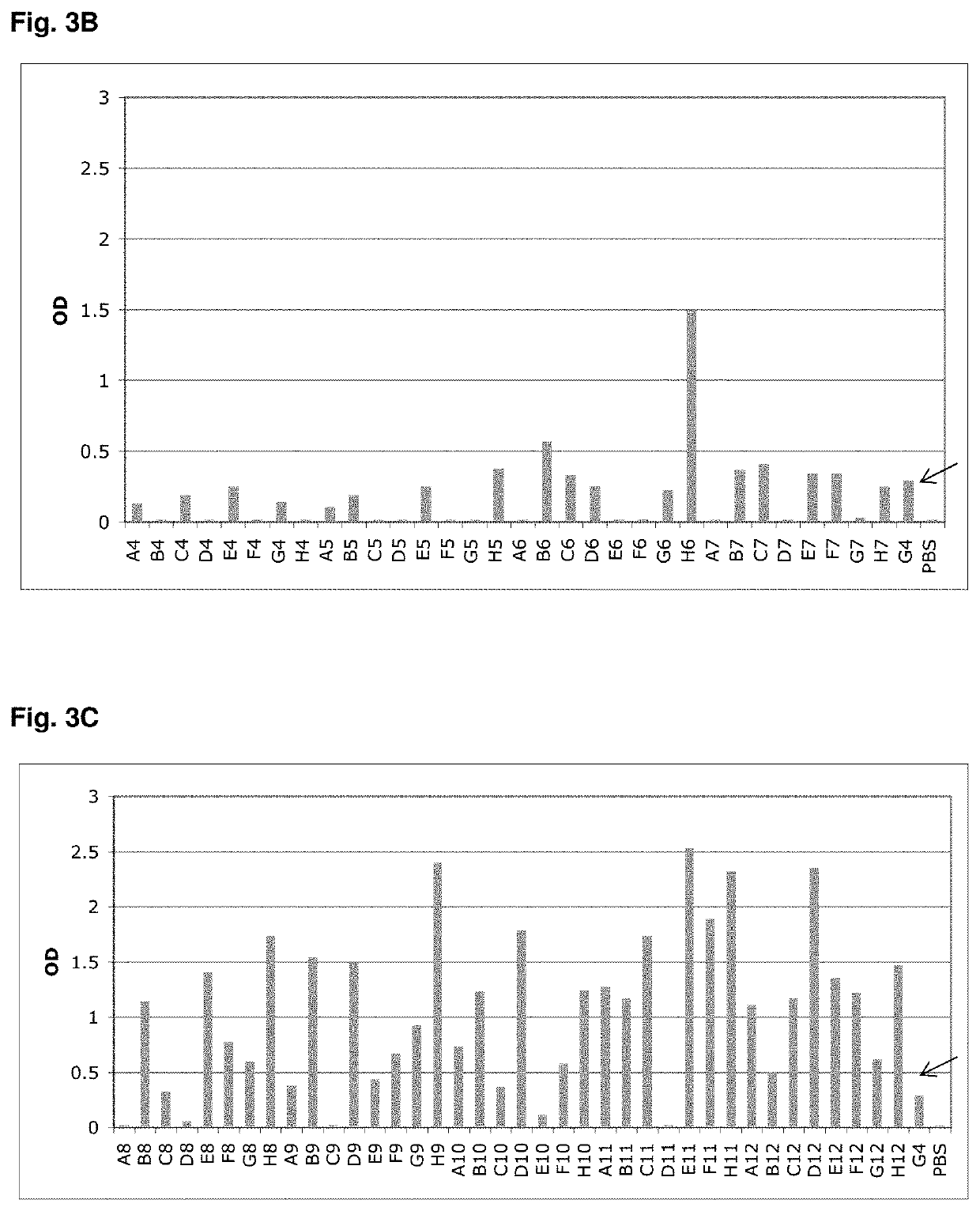Specific and High Affinity Binding Proteins Comprising Modified SH3 Domains of FYN Kinase
a technology of fyn kinase and sh3 domain, which is applied in the field of specific and high affinity binding proteins comprising modified sh3 domains of fyn kinase, can solve the problems of inability to guarantee a protein with inability to use an entirely human scaffold, and inability to achieve in vivo application. , to achieve the effect of reducing the number of in vitro applications
- Summary
- Abstract
- Description
- Claims
- Application Information
AI Technical Summary
Benefits of technology
Problems solved by technology
Method used
Image
Examples
example 1
Fyn SH3 Derivative
Example 1.1: Expression of Fyn SH3 Mutants
[0188]For the purpose of evaluating the expression of mutants of Fyn SH3 a dot blot analysis of three different Fyn SH3 sublibraries was performed (FIGS. 1A-1C): in the first library only the RT-loop was randomized, in the second the Src loop was randomized and extended to 6 residues and in the third library the RT- and the Src loop were randomized simultaneously, the latter loop being extended from 4 to 6 residues. The percentage of expressed Fyn SH3 mutants ranged from 59-90%.
TABLE 1LibraryExpressed mutants (%)Number of clones testedRT-Src5929n-Src9029RT-Src and n-Src6258
example 1.2
ay Selections Against Mouse Serum Albumin
[0189]A library of 107 different Fyn SH3 was created (only the RT-loop was randomized) and cloned into the phagemid vector pHEN1 (Hoogenboom et al. “Multi-subunit proteins on the surface of filamentous phage: methodologies for displaying antibody (Fab) heavy and light chains”, Nucleic Acids Res, 19(15):4133-7, 1991). The library was displayed on phages and 3 rounds of panning were performed against mouse serum albumin (MSA). After the third round, screening for binding proteins was performed by monoclonal phage-ELISA; 13 positive clones were detected (FIG. 2). Sequencing of the 13 clones revealed that two different sequences were enriched, denoted G4 and C4.
[0190]However, after subcloning and expression of G4 in the pQE-12 vector (Qiagen, expression and purifcation according to manufacturer's handbook under native conditions) the binding of the protein towards MSA could not be detected by ELISA (FIG. 4) due to low affinity (phage ELISA is mor...
example 1.3
ay Selections Against the Extra Domain b of Fibronectin (ED-B)
[0191]ED-B was chosen as a target protein in order to demonstrate the ability to select Fyn SH3 derived binders against a pharmaceutically relevant protein. ED-B is a 91 amino acid Type III homology domain that is inserted into the fibronectin molecule by a mechanism of alternative splicing at the level of the primary transcript whenever tissue remodelling takes place (Zardi et al., “Transformed human cells produce a new fibronectin isoform by preferential alternative splicing of a previously unobserved exon.” Embo J. 6(8): 2337-42, 1987). It is a good quality marker of angiogenesis that is overexpressed in a variety of solid tumors (e.g. renal cell carcinoma, colorectal carcinoma, hepatocellular carcinoma, high-grade astrocytomas, head and neck tumours, bladder cancer, etc.) but is virtually undetectable in normal adult tissue (except for the endometrium in the proliferative phase and some vessels in the ovaries). (For m...
PUM
| Property | Measurement | Unit |
|---|---|---|
| dissociation constant | aaaaa | aaaaa |
| concentration | aaaaa | aaaaa |
| concentrations | aaaaa | aaaaa |
Abstract
Description
Claims
Application Information
 Login to View More
Login to View More - R&D
- Intellectual Property
- Life Sciences
- Materials
- Tech Scout
- Unparalleled Data Quality
- Higher Quality Content
- 60% Fewer Hallucinations
Browse by: Latest US Patents, China's latest patents, Technical Efficacy Thesaurus, Application Domain, Technology Topic, Popular Technical Reports.
© 2025 PatSnap. All rights reserved.Legal|Privacy policy|Modern Slavery Act Transparency Statement|Sitemap|About US| Contact US: help@patsnap.com



